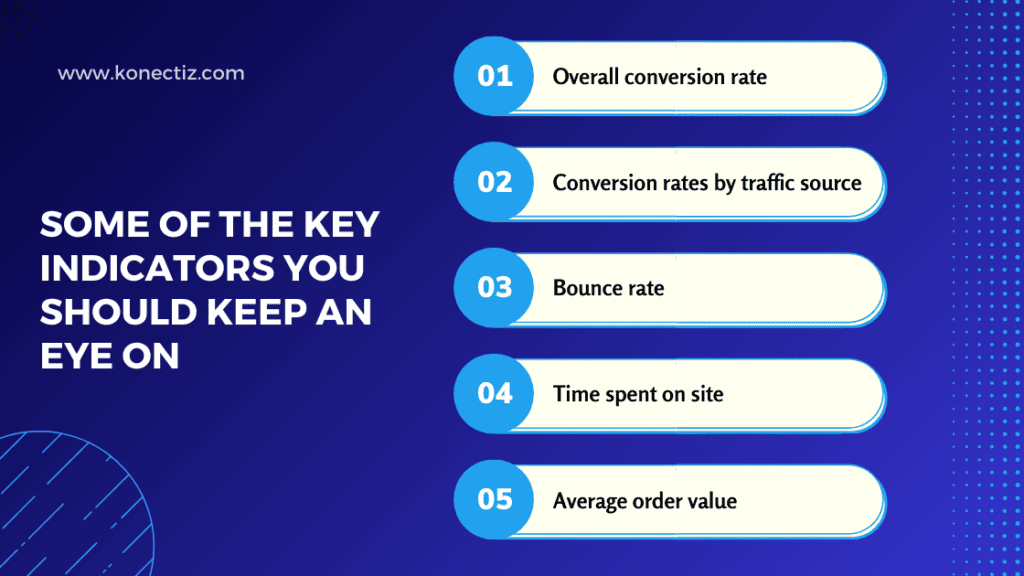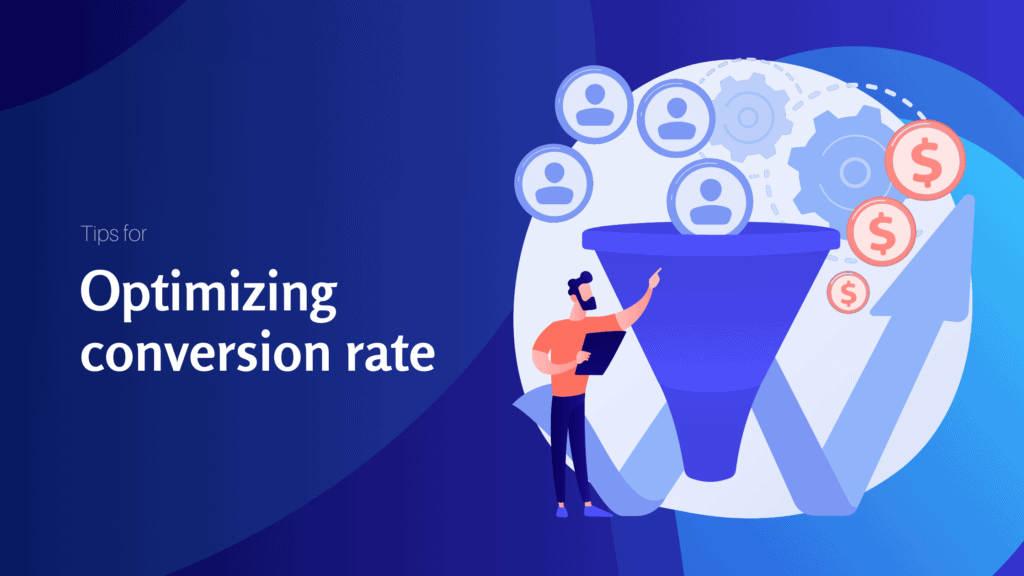Introduction
Do you want to maximize your website’s results? Conversion rate optimization is the key! In this article, we reveal the essential tips for improving your conversions and increasing your conversion rate. Whether you have an e-commerce site, a blog or a corporate site, conversion is essential to achieving your goals and generating revenue. With these tips, you’ll learn how to optimize your pages, create compelling calls to action and get the most out of your visitors.
Find out how to analyze data, test different approaches and use powerful tools to improve your conversion rate. From optimizing your layout to creating persuasive landing pages, you’ll have the keys to improving your online results. Don’t let your visitors leave without taking action. Keep them engaged and turn them into loyal customers with our conversion rate optimization tips. Ready to increase your online impact? Read on to turn your website into an effective conversion machine.
Understanding the importance of conversion rate optimization
The conversion rate is a key indicator for measuring the success of your website. It represents the percentage of visitors who carry out a desired action, such as making a purchase, subscribing to a newsletter or downloading a document. Conversion rate optimization enables you to increase this percentage and maximize your site’s results. Understanding the importance of this practice is essential to achieving your goals and generating income online.
Why is conversion rate optimization so important? Simply because every visitor to your website represents a conversion opportunity. If you can convince more visitors to take action, you’ll increase your sales, subscribers or leads. This means you’ll get a higher return on investment for every euro spent on marketing or advertising. Conversion rate optimization is an ongoing process that requires constant analysis of your data, regular testing and continuous improvement of your website. However, the results are worth the effort and can have a significant impact on your online business.
Key indicators for measuring conversion rate optimization
It’s essential to measure your website’s performance to know whether your conversion rate optimization efforts are bearing fruit.
Some of the key indicators you should keep an eye on :
Analyzing these indicators will help you identify your website’s strengths and weaknesses, and guide your conversion rate optimization efforts. Here are some of the key indicators you should keep an eye on:

1. Overall conversion rate
This is the percentage of visitors who take a desired action on your website. This can be a purchase, a newsletter subscription, a download, etc.
2. Conversion rates by traffic source
It’s important to know which traffic sources generate the most conversions on your website. This can be organic traffic, advertising campaigns, social networks, etc. By analyzing this data, you can adjust your marketing strategy to maximize results.
3. Bounce rate
The bounce rate measures the percentage of visitors who leave your website without taking any action. A high bounce rate may indicate a user experience problem or a lack of relevance in your content.
4. Time spent on site
Time spent on site is an indicator of visitor engagement. The more time visitors spend on your site, the more likely they are to convert.
5. Average order value
This is the average amount spent by each visitor who converts. By increasing this value, you can increase your overall income.
Analyze your website's current conversion rate
The first step to improving your conversion rate is to understand where you are now. To do this, you need to analyze your website data to get a clear picture of your performance.
Some of the metrics you need to look at :
Web analysis tools such as Google Analytics are essential for collecting and interpreting this data. Here are some of the metrics you need to look at:
1. Number of unique visitors
This is the total number of distinct visitors to your website over a given period. This gives you an idea of your site’s potential audience.
2. Overall conversion rate
As mentioned above, this is the percentage of visitors who take a desired action on your website.
3. Conversion rate per page
It’s important to know which pages on your website convert best. This will enable you to concentrate your optimization efforts on these specific pages.
4. Conversion rate by device
It’s also crucial to understand how visitors use different devices to access your website. This will help you adapt your site to offer an optimal user experience on all devices.
Identify areas for improvement in the conversion funnel
1. Awareness
The visitor is discovering your website for the first time.
2. Interest
The visitor shows an interest in your product or service.
3. Decision
The visitor is considering taking action, but is still hesitating.
4. Action
The visitor carries out the desired conversion, such as a purchase or registration.
Set up A/B tests to optimize conversions
A/B testing is one of the best ways to optimize your conversion rate. This method involves creating two different versions of a page or element on your website, and testing their performance by measuring the results obtained. To set up an A/B test, follow these steps:
1. Select an item to test
This could be a landing page, a form, a call-to-action button, or any other element that could have an impact on your conversion rate.
2. Create a variant
Modify one element at a time to compare performance. For example, you can test different button colors or call-to-action texts.
3. Divide your traffic
Direct some of your traffic to the original version and some to the variant. Make sure that traffic is distributed randomly for reliable results.
4. Measure results
Use the key indicators mentioned above to measure the performance of each version. Compare conversion rates, time spent on site, bounce rate, etc.
5. Choose the best version
Once you’ve achieved significant results, choose the version that generated the best results and implement it on your website.
User experience and its impact on conversion rates
User experience plays an essential role in optimizing conversion rates. If your website offers a fluid, intuitive and pleasant experience, visitors will be more inclined to take action.
A few tips to improve your site's user experience :
1. Intuitive navigation
Make sure your website is easy to navigate, with clear menus and a logical structure. Visitors need to be able to find what they’re looking for quickly.
2. Fast loading time
Visitors don’t like to wait. Make sure your website loads quickly on all devices to avoid abandonment.
3. Responsive design
Your website needs to adapt automatically to all devices, from desktops to smartphones. A responsive design guarantees an optimal user experience on any device.
4. Quality content
Offer informative, convincing and well-structured content to captivate visitors and encourage them to take action.
5. Simplify the conversion process
Minimize the number of steps required to perform a conversion. For example, limit the number of fields in a registration form or facilitate the payment process when making a purchase.
Optimize landing pages to increase conversions
Landing pages play a crucial role in conversion rate optimization. A good landing page is targeted, persuasive and encourages visitors to take action. Here are some tips for optimizing your landing pages:
1. Target a specific goal
Each landing page must have a clear objective. For example, a landing page for a product should encourage visitors to buy it, while a landing page for a newsletter sign-up should encourage visitors to subscribe.
2. Use compelling calls to action
Your calls to action must be clear, visible and persuasive. Use action verbs and create a sense of urgency to encourage visitors to act immediately.
3. Highlight the benefits
Clearly explain the benefits visitors will gain by taking action. Show them how your product or service can solve their problems or meet their needs.
4. Use testimonials and reviews
Testimonials and reviews from satisfied customers reinforce the credibility of your offer and encourage visitors to place their trust in your company.
5. Simplify the conversion process
Minimize the number of steps required to perform a conversion. Remove distractions and superfluous elements that could divert visitors’ attention.
The role of persuasive copywriting in conversion rate optimization
Persuasive copywriting is a key element in conversion rate optimization. Your copy needs to be convincing, engaging and persuade visitors to take action.
A few tips to improve your persuasive writing
1. Know your target audience
To create persuasive copy, you need to understand your target audience’s needs, wants and concerns. Use language and arguments that speak directly to them.
2. Use social proof
Social proof, such as testimonials from satisfied customers, positive reviews or convincing statistics, reinforces the credibility of your offer and encourages visitors to trust your company.
3. Create a sense of urgency
Use phrases such as “limited-time offer” or “limited stock” to encourage visitors to act immediately. A sense of urgency can dramatically increase conversion rates.
4. Use action verbs
Action verbs encourage visitors to take action. Use phrases such as “buy now”, “sign up today” or “download immediately” to encourage visitors to take action.
5. Test different versions
As mentioned above, A/B testing is a great way to test different approaches to persuasive copywriting. Test different wordings, call-to-actions and layouts to find the best combination.
Tools and resources for effective conversion rate optimization
Conversion Rate Optimization (CRO) is an essential step in improving your website’s performance and converting as many of your visitors as possible into customers or active users. Here’s a list of tools and resources that can help you effectively optimize your conversion rate, along with some tips on how to put them to use.
Analysis and Test Tools
1. Google Analytics
An essential tool for tracking user behavior on your site. Use it to identify high-bounce pages and user paths.
2. Hotjar or Crazy Egg
3. Optimizely or VWO (Visual Website Optimizer)
Optimizely or VWO (Visual Website Optimizer) are A/B and multivariate testing platforms for experimenting with different elements of your web pages (e.g. titles, images, calls to action) to determine what converts best.
4. Google Optimize
Another free A/B testing tool that integrates well with Google Analytics for deeper insights.
Strategies and Practices
1. Optimized landing page
Make sure your landing pages are clear, targeted to the user’s needs, and offer clear value. Headlines should be catchy, and calls to action (CTAs) clear and convincing.
2. Site speed
Use tools like Google PageSpeed Insights to analyze and improve your site’s loading speed. Fast sites improve user experience and conversion rates.
3. Persuasive copywriting
The content of your site must be convincing and focused on the benefits for the user. Use powerful headlines, bullet points for easy reading and testimonials to increase credibility.
4. Mobile optimization
Make sure your site is fully responsive. A large proportion of web traffic comes from mobile devices, and a poor user experience on these devices can hurt your conversions.
Conclusion
Conversion rate optimization is more than just a marketing tactic; it’s a customer-centric philosophy that guides companies towards a deeper understanding of their users. By leveraging data to inform every decision, CRO helps create more engaging and effective online experiences, leading to a significant increase in conversions.
This continuous process of analysis, testing and adaptation is not only a growth driver, but also a catalyst for improving customer satisfaction and loyalty. Ultimately, conversion rate optimization transcends simple website performance improvement to become a key element of a company’s overall strategy, essential to its long-term success.





